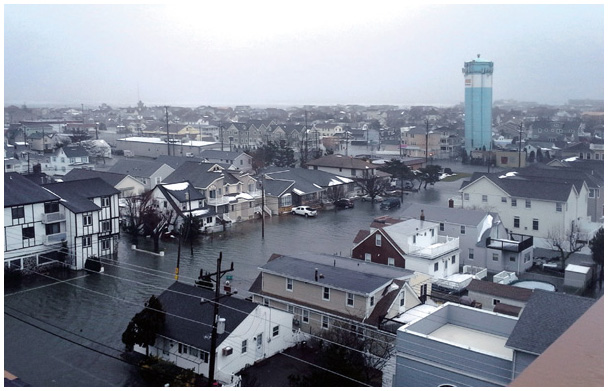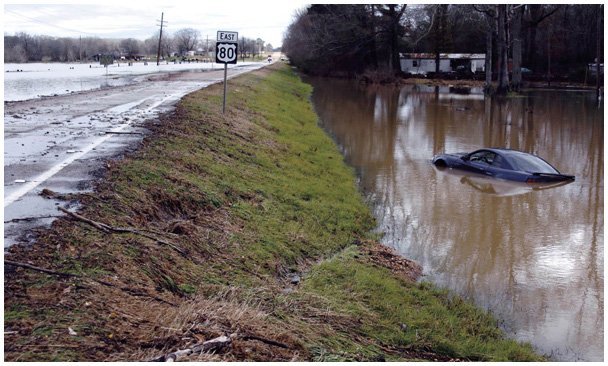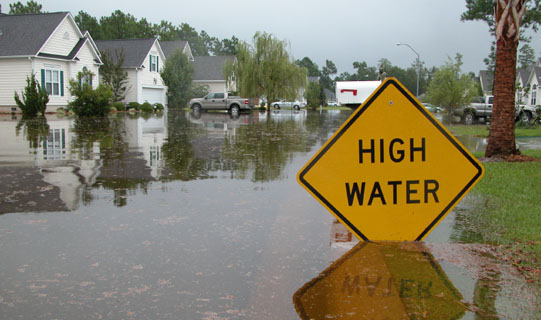The last time the National Flood Insurance Program's authorization ran out, it took 17 short-term extensions, four lapses and nearly four years before the program was at last reauthorized in July 2012.
This time, the feeling is that things will be different. Legislators appear eager to get to work on extending and reforming the NFIP, and the industry is more prepared and more willing than ever to get involved in the Flood insurance market and assume a greater share of the risk — which is key to the reforms contemplated by Congress.
Tom Santos, vice president of federal affairs for the Washington-based American Insurance Association, said that last time, Congress, as it often does, waited until the last minute to discuss the NFIP and then other issues emerged — such as the financial crisis in 2008 — that overshadowed Flood, contributing to the environment of temporary extensions and program lapses.
While the NFIP's authorization does not expire until September 2017, The Housing and Insurance Subcommittee of the House's Financial Services Committee already held two hearings on the issue in January. The subcommittee's chairman, Rep. Blaine Luetkemeyer, R-Mo., said there is broad recognition that the “status quo isn't acceptable” as it relates to the NFIP.
The program is $24 billion in debt, which is driving bipartisan consensus among legislators that something needs to be done to protect taxpayers from any further burden. The focus of the second hearing on Jan. 13, in fact, was on finding ways to accomplish this by getting the private market more involved.
And if there is momentum in Washington to encourage private-sector involvement in Flood coverage, perhaps the biggest development in NFIP discussions this time around is that the private sector is all ears. Tom Glassic, vice president, policy and government relations for the Chicago-based Property Casualty Insurers Association of America, said, “In the mid 2000s, if you talked to the major insurers about offering primary Flood or first-dollar Flood, those were fighting words.”
Today, that's changed. Robert Hartwig, president of the New York City-based Insurance Information Institute, said the industry's abundance of traditional and alternative capital — and a recent history of very large amounts of catastrophe risk being transferred to private reinsurers and capital markets from state-run insurers such as the Tallahassee, Fla.-based Florida Citizens Property Insurance Corp. — are driving private-sector interest in Flood.
Hartwig noted that technological advancements allow for better modeling of Flood risk. Better modeling, he added, also makes Flood more attractive to capital market players interested in catastrophe risks.
Another factor is Washington's recognition during the program's last renewal that heavily subsidized NFIP rates pose a major barrier for private insurers. Don Griffin, vice president, personal lines for PCI, says the last renewal, the Biggert-Waters Flood Insurance Reform Act of 2012 (BW-12), “was the first time Congress was somewhat willing to deal with the fact that the industry couldn't get in because it couldn't be competitive based on rates charged by NFIP.”
BW-12 included a move toward more actuarially sound rates, and “the industry sees that as a sign that maybe they can get in there, be competitive and make it work,” Griffin added.
 Private sector regulation and interest
Private sector regulation and interest
Although the industry and Congress would seem to share the goal of bringing in the private sector, “the devil is in the details,” said John Dickson, president of Advanced Insurance Coverages, a unit of Kalispell, Mont.-based National Flood Services. “The long and short of it is there is agreement the program needs support and a different direction. But the precise nature of that direction is still in debate.”
One potential concern with greater private-sector involvement is adverse selection: If the private market comes in and writes NFIP risks it believes could be profitable, the NFIP may be left with the least favorable policies, putting taxpayers “in a more difficult spot than they are now,” noted Charles Symington, senior vice president, external and government affairs for the Alexandria, Va.-based Independent Insurance Agents and Brokers of America.
Several experts cited a figure that just 1% of properties written by the NFIP is responsible for 30% of losses. Experts acknowledged the private sector would likely not be interested in writing that 1%.
Both Dickson and Griffin pointed to Florida Citizens' take-out program as a possible way forward.
“Maybe the private market could take blocks of business out of the program,” Griffin said. “That way, they would get some of the good with the bad.”
Other ideas floated include transitioning the NFIP to either a true residual market or a reinsurer of last resort, similar to the Terrorism Risk Insurance Act.
Move to Homewners'?
At the Housing and Insurance Subcommittee's Jan. 13 hearing, Birny Birnbaum, executive director of the Austin, Texas-based Center for Economic Justice, proposed eliminating the NFIP and transitioning risks to the private sector by having Congress stipulate that Flood coverage must be included in Homeowners' and Commercial Property policies. His statements indicated that adverse selection wouldn't be a possibility, but rather a certainty, if the NFIP exists side-by-side with private competitors. He says the industry has the capital and know-how to take on Flood without putting the program and taxpayers at any further risk.
While Birnbaum acknowledged rates would go up for homeowners in high-risk areas under his proposal, he said federal spending could be shifted from providing subsidies to these policyholders to paying for mitigation efforts instead, which would address long-term exposure issues and control their insurance rates by reducing their risk to flooding.
Other witnesses at the hearing favored smaller steps, noting that the private Flood market is very small at the moment and it would take time to see how insurers evaluate and write the risk.
Most in the insurance industry support HR 2901, the Flood Insurance Market Parity and Modernization Act, which clarifies BW-12 language that allowed privately issued Flood insurance to meet mandatory purchase requirements. Santos said there was confusion about definitions in BW-12, and insurers were unable to bring products to market based on how banks viewed private insurance and interpreted the law.
The bill also clarified that policies issued by eligible non-admitted insurers would meet mandatory purchase requirements, allowing surplus lines carriers to participate in the market.
 Birnbaum, at the hearing, opposed the idea of surplus-lines carriers writing Personal Flood because their rates would not be subject to regulatory oversight, but Glassic told NU that private Flood coverage would likely only get off the ground in the surplus lines market. Once admitted carriers see there is money to be made, then they may enter the market and compete.
Birnbaum, at the hearing, opposed the idea of surplus-lines carriers writing Personal Flood because their rates would not be subject to regulatory oversight, but Glassic told NU that private Flood coverage would likely only get off the ground in the surplus lines market. Once admitted carriers see there is money to be made, then they may enter the market and compete.
Ultimately, experts said, it's too early to tell which direction legislators may go and what the NFIP will look like come October 2017. And while much of the talk is about the program's debt and the need for big changes, some offered perspective on the NFIP's fiscal issues: “We often see comments about the program being $24 billion in debt,” Neal Conolly, president of the St. Petersburg, Fla.-based Wright Flood Services, said. Though the program spans 47 years, he said “there are really only two events that created that deficit.”
Hurricane Katrina in 2005, he noted, saddled the program with more than $17 billion in debt while 2012's Superstorm Sandy added more than $6 billion.
“If you take those two events out, the program has actually been sound,” Conolly added.
Furthermore, Conolly sayid Congress is usually quick to authorize large sums of disaster funding after a significant event, costs that the NFIP helps control.
“What I think people fail to focus on is if there wasn't an NFIP, the $24 billion in deficit is likely to have been two to three times higher because there would have been no insurance program and yet Congress may have felt itself politically compelled to provide disaster relief to the same losses that are at least partially insured by the NFIP,” Conolly said.
It's a point Ian Macartney, Marsh's Flood Insurance Services Practice leader, echoed.
“How much more disaster assistance would the U.S. have paid without that program?” he asked, adding he is a strong supporter of the NFIP.
Symington said there are certainly blemishes when it comes to the NFIP, but that legislators have to be careful about preserving what has worked.
“Let's be cautious,” he said. “Let's do our homework, and if we're going to look at major reforms, let's not do any harm. Because we all know there are ripple effects when there are major changes.”
Legislators got a good look at ripple effects when BW-12 nudged the NFIP toward actuarial rates.
“As soon as FEMA followed the statute, particularly in coastal residential areas, people saw their rates jump dramatically,” he said. “Biggert-Waters froze the real estate market in many coastal areas.”
 This resulted in the Homeowner Flood Insurance Affordability Act of 2014, which rescinded or delayed many of BW-12's rate increases. But that act had some ripple effects of its own. Glassic says HFIAA included a $25 surcharge on flood policies for primary homes and a $250 surcharge on second homes and businesses to make up revenue lost from the delayed rate increases.
This resulted in the Homeowner Flood Insurance Affordability Act of 2014, which rescinded or delayed many of BW-12's rate increases. But that act had some ripple effects of its own. Glassic says HFIAA included a $25 surcharge on flood policies for primary homes and a $250 surcharge on second homes and businesses to make up revenue lost from the delayed rate increases.
PCI's Glassic and Griffin maintained the $250 charge has negatively impacted voluntary Flood insurance take-up for favorable lower risk second homes ever since.
Conolly explained, “The voluntary policies in particular are very inexpensive relative to the risk.” This makes a $250 hike significant, he continued, causing a high number of people to reconsider purchasing coverage.
Declining take-up
That issue and others, such as remapping in some counties, have combined to drive down the NFIP's policy count to around 5.1 million from 5.5 million a couple of years ago. Again, experts see the private market potentially helping with declining take-up.
Martin Hartley, CEO of the White Plains, N.Y.-based PURE Insurance, said the private market could make buying a policy easier.
“Buying an NFIP policy is painful,” he said.
As a write-your-own company that writes and services NFIP policies, he said, “We try to make it as painless as possible, but it's still much more challenging than it could be. And that obstructs the sale.”
Voluntary take-up could be increased with the private sector bringing options to the table that would simplify Flood cover.
“The process of getting a quote and binding a policy with the NFIP is hard work,” Hartley said. “You really have to want it.”
In general, Hartley said, “I think the introduction of more private competition — if you open it up, [private competitors] will come, and I think by their very nature they will come up with solutions we haven't thought of yet.”
 Neal Schmidt, vice president of the Bala Cynwyd, Pa.-based Philadelphia Insurance Cos., said that in addition to being an NFIP provider and offering excess commercial Flood coverage, his company has been writing Commercial Flood as part of a property package policy for risks in favorable flood zones, and has a commercial primary Flood program for favorable risks in more difficult flood zones that offers broader coverage than the NFIP.
Neal Schmidt, vice president of the Bala Cynwyd, Pa.-based Philadelphia Insurance Cos., said that in addition to being an NFIP provider and offering excess commercial Flood coverage, his company has been writing Commercial Flood as part of a property package policy for risks in favorable flood zones, and has a commercial primary Flood program for favorable risks in more difficult flood zones that offers broader coverage than the NFIP.
He said the company has been offering its own coverages for about three years, which he said puts Philadelphia “a little ahead of the curve. And he, too, said he is seeing more interest in flood.
“I think there's definitely more interest from private insurers. Certainly more now than previously,” Schmidt said.
“While there is that appetite, this is a complicated risk to insure,” Santos said. “I think we are looking at a fairly significant transition period if we can even get [to a robust private market]. This isn't going to happen overnight, even if there is a private market willing to take on some of this risk.”
For one, he noted, FEMA holds all loss data, which insurers would need for underwriting.
As for the future of the NFIP, although experts are unsure where discussions will end up, they are happy the conversation is already getting started, and that key issues such as mapping, private solutions and affordability have already been raised in hearings.
Symington said, “All indications are they're going to spend a lot of time on it this year and try to get ahead of the deadline. Many times they run up against deadlines, so we want to thank the Financial Services Committee for getting out of the gate early.”
Hartwig stated his preferred outcome: “If all goes well, after 2017 we'll see more carriers and capacity in this market, more competition and at the same time, less of a burden on the U.S. taxpayer.”
© 2025 ALM Global, LLC, All Rights Reserved. Request academic re-use from www.copyright.com. All other uses, submit a request to [email protected]. For more information visit Asset & Logo Licensing.







